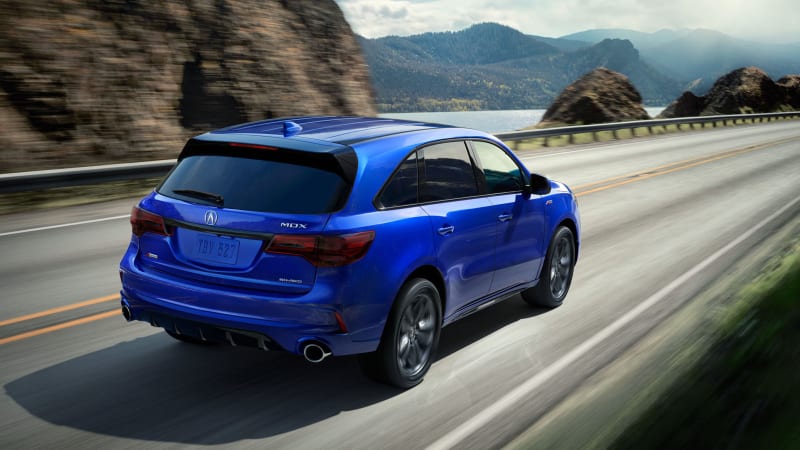The outgoing Acura MDX has nothing to be ashamed of, but the thing about refreshes is that the engineers and product teams always have something to fine tune. Some of it is planned in advance — the cosmetic upgrades and the A-Spec trim were probably always part of the product roadmap. But there are also some tweaks that seem to be a response to customer feedback. Let's take a closer look.
Most important, some of the goodies reserved only for the old Sport Hybrid will now be available on all MDXs. Notably, the Active Damper System — a continuously adjustable valve that controls the flow of hydraulic fluid within the damper — is available on non-hybrid MDXs for the first time. The system has several settings, from plush to firm. We found this system worked very well on the Sport Hybrid during our first drive, so it's a useful upgrade that buyers will be able to readily appreciate.
Most important, some of the goodies reserved only for the old Sport Hybrid will now be available on all MDXs. Notably, the Active Damper System — a continuously adjustable valve that controls the flow of hydraulic fluid within the damper — is available on non-hybrid MDXs for the first time. The system has several settings, from plush to firm. We found this system worked very well on the Sport Hybrid during our first drive, so it's a useful upgrade that buyers will be able to readily appreciate.
Next up is an A-Spec appearance trim, which looks sportier but doesn't offer any additional performance or comfort features, just like the rest of Acura's A-Spec models at this point. For the MDX, wider 20-inch wheels and a combination of gloss black and "dark chrome" trim compliment a revised front fascia and grille. Inside, the seats get a mix of Alcantara and leather with contrasting stitching, there are unique gauges, sport pedals, and a thicker steering wheel. It looks decent enough, particularly inside, and there's enough there to make the trim stand apart from the more pedestrian trims. Oh, and there's an exclusive color: Apex Blue Pearl.
A quick aside on prices: The base MDX without SH-AWD runs an MSRP of $45,295, and the A-Spec (only available with SH-AWD) is $55,795.
Normal MDXs get a few more color options, although they'll cost extra: Majestic Black Pearl, Performance Red, and Canyon Bronze Metallic. One no-cost color option that's new is Gunmetal Metallic. Inside, there are some additional interior options, like Desert Olive Ash wood trim, contrasting seat stitching, and standard 4-way power lumbar adjustment on the front seats. Advance Package MDXs get wider 20-inch wheels, too.
A quick aside on prices: The base MDX without SH-AWD runs an MSRP of $45,295, and the A-Spec (only available with SH-AWD) is $55,795.
Normal MDXs get a few more color options, although they'll cost extra: Majestic Black Pearl, Performance Red, and Canyon Bronze Metallic. One no-cost color option that's new is Gunmetal Metallic. Inside, there are some additional interior options, like Desert Olive Ash wood trim, contrasting seat stitching, and standard 4-way power lumbar adjustment on the front seats. Advance Package MDXs get wider 20-inch wheels, too.
And now on to those tweaks and enhancements that might not have been planned a long time ago in a product meeting far away. The engine stop/start function has been tweaked to be smoother and quicker, thanks to an upgraded brake sensor and some software tweaks. And the nine-speed automatic transmission has been reprogrammed for smoother starts, prioritizing second-gear starts in more situations. Both of these little tweaks could add up to a fairly large difference in moving away from a stoplight, and we'll be interested to see how much of a difference it makes.
Same goes for the broader tweaks for 2019, in general. We like the MDX already, and if it manages to drive more like its excellent smaller stablemate, the RDX, we'll be mightily impressed.
Same goes for the broader tweaks for 2019, in general. We like the MDX already, and if it manages to drive more like its excellent smaller stablemate, the RDX, we'll be mightily impressed.


Comments
Post a Comment
Wish to leave a message?